
The Atari 2600 is a home video game console developed and produced by Atari, Inc. Released in September 1977 as the Atari Video Computer System, it popularized microprocessor-based hardware and games stored on swappable ROM cartridges, a format first used with the Fairchild Channel F in 1976. The VCS was bundled with two joystick controllers, a conjoined pair of paddle controllers, and a game cartridge—initially Combat and later Pac-Man. Sears sold the system as the Tele-Games Video Arcade. Atari rebranded the VCS as the Atari 2600 in November 1982, alongside the release of the Atari 5200.

The Atari 5200 SuperSystem or simply Atari 5200 is a home video game console introduced in 1982 by Atari, Inc. as a higher-end complement for the popular Atari Video Computer System. The VCS was renamed to Atari 2600 at the time of the 5200's launch. Created to compete with Mattel's Intellivision, the 5200 wound up a direct competitor of ColecoVision shortly after its release. While the Coleco system shipped with the first home version of Nintendo's Donkey Kong, the 5200 included the 1978 arcade game Super Breakout, which had already appeared on previous Atari home platforms.

The Atari 7800 ProSystem, or simply the Atari 7800, is a home video game console officially released by Atari Corporation in 1986 as the successor to both the Atari 2600 and Atari 5200. It can run almost all Atari 2600 cartridges, making it one of the first consoles with backward compatibility. It shipped with a different joystick than the 2600-standard CX40 and included Pole Position II as the pack-in game. The European model has a gamepad instead of a joystick. Most of the early releases for the system are ports of 1981–1983 arcade video games. The final wave of 7800 cartridges are closer in style to what was available on other late 1980s consoles, such as Scrapyard Dog and Midnight Mutants.
Commodore International Corporation was a home computer and electronics manufacturer incorporated in The Bahamas with executive offices in the United States founded in 1976 by Jack Tramiel and Irving Gould. Commodore International (CI), along with its subsidiary Commodore Business Machines (CBM), was a significant participant in the development of the home computer industry, and at one point in the 1980s was the world's largest in the industry.

The Atari 8-bit computers, formally launched as the Atari Home Computer System, are a series of home computers introduced by Atari, Inc., in 1979 with the Atari 400 and Atari 800. The architecture is designed around the 8-bit MOS Technology 6502 CPU and three custom coprocessors which provide support for sprites, smooth multidirectional scrolling, four channels of audio, and other features. The graphics and sound are more advanced than most of its contemporaries, and video games are a key part of the software library. The 1980 first-person space combat simulator Star Raiders is considered the platform's killer app.
The video game crash of 1983 was a large-scale recession in the video game industry that occurred from 1983 to 1985 in the United States. The crash was attributed to several factors, including market saturation in the number of video game consoles and available games, many of which were of poor quality. Waning interest in console games in favor of personal computers also played a role. Home video game revenue peaked at around $3.2 billion in 1983, then fell to around $100 million by 1985. The crash abruptly ended what is retrospectively considered the second generation of console video gaming in North America. To a lesser extent, the arcade video game market also weakened as the golden age of arcade video games came to an end.

Centipede is a 1981 fixed shooter arcade video game developed and published by Atari, Inc. Designed by Dona Bailey and Ed Logg, it was one of the most commercially successful games from the golden age of arcade video games and one of the first with a significant female player base. The primary objective is to shoot all the segments of a centipede that winds down the playing field. An arcade sequel, Millipede, followed in 1982.

Berzerk is a video game designed by Alan McNeil and released for arcades in 1980 by Stern Electronics of Chicago. The game involves a Humanoid Intruder who has to escape maze-like rooms that are littered with robots that slowly move towards and shoot at the Humanoid. The player can shoot at the robots to try and escape the room. Along with the robots, a smiley face known as Evil Otto appears to hunt down the player within each room.

Ms. Pac-Man is a 1981 maze arcade video game developed by General Computer Corporation and published by Midway. It is a spin-off sequel to Pac-Man (1980) and the first entry in the series to not be made by Namco. Controlling the title character, Pac-Man's wife, the player is tasked with eating all of the pellets in an enclosed maze while avoiding four colored ghosts. Eating the larger "power pellets" lets the player eat the ghosts, which turn blue and flee.
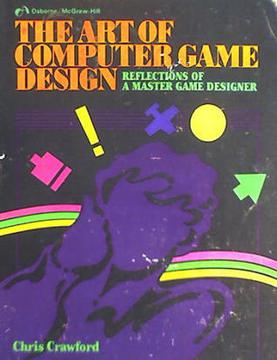
The Art of Computer Game Design by Chris Crawford is the first book devoted to the theory of computer and video games. The book attempts to categorize computer games and talks about design precepts that serve as guidelines for game designers. It was originally published in Berkeley, California, by McGraw-Hill/Osborne Media in 1984. The original edition became available as a free download from a site maintained by Washington State University, Pullman in 1997. In 2011 the free download was removed and the text is currently available as a Kindle e-book.
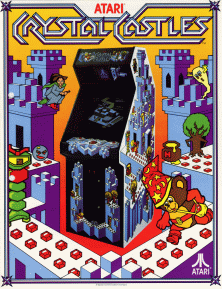
Crystal Castles is an arcade video game released by Atari, Inc. in 1983. The player controls Bentley Bear who has to collect gems located throughout trimetric-projected rendered castles while avoiding enemies, some of whom are after the gems as well.

Compute!, often stylized as COMPUTE!, was an American home computer magazine that was published from 1979 to 1994. Its origins can be traced to 1978 in Len Lindsay's PET Gazette, one of the first magazines for the Commodore PET computer. In its 1980s heyday, Compute! covered all major platforms, and several single-platform spinoffs of the magazine were launched. The most successful of these was Compute!'s Gazette, which catered to VIC-20 and Commodore 64 computer users.
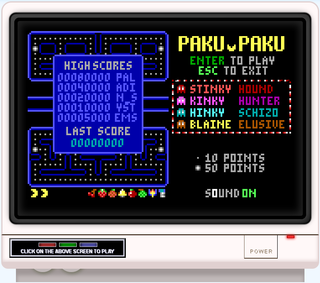
A personal computer game, also known as a computer game or abbreviated PC game, is a video game played on a personal computer (PC). The term PC game has been popularly used since the 1990s referring specifically to games on "Wintel" which has dominated the computer industry since.
Optimized Systems Software (OSS) was a company that produced disk operating systems, programming languages with integrated development environments, and applications primarily for Atari 8-bit computers. The founders of OSS previously developed Atari DOS, Atari BASIC, and the Atari Assembler Editor for Atari, Inc., and many OSS products are substantially improved versions. OS A+ and DOS XL are based on Atari DOS. BASIC A+, BASIC XL, and BASIC XE are based on Atari BASIC. EASMD and MAC/65 are modeled on the Atari Assembler Editor. Action! is an ALGOL-inspired compiled programming language with an integrated full-screen editor. OSS also sold some software for the Apple II.
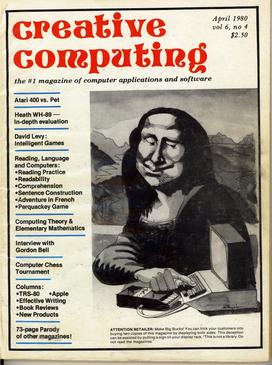
Creative Computing was one of the earliest magazines covering the microcomputer revolution. Published from October 1974 until December 1985, the magazine covered the spectrum of hobbyist/home/personal computing in a more accessible format than the rather technically oriented Byte.

Antic was a print magazine devoted to Atari 8-bit computers and later the Atari ST. It was named after the ANTIC chip in the 8-bit line which, in concert with CTIA or GTIA, generates the display. The magazine was published by Antic Publishing from April 1982 until June/July 1990.Antic printed type-in programs, reviews, and tutorials, among other articles. Each issue contained one type-in game as "Game of the Month." In 1986, STart magazine was spun off to exclusively cover the Atari ST line.
Atari Program Exchange (APX) was a division of Atari, Inc. that sold software via mail-order for Atari 8-bit computers from 1981 until 1984. Quarterly APX catalogs were sent to all registered Atari 8-bit owners. APX encouraged any programmer, not just professionals, to submit video games, educational software, applications, and utilities. A few internally developed Atari products were sold through APX, such as Atari Pascal, the developer handbook De Re Atari, and a port of the arcade video game Kangaroo.
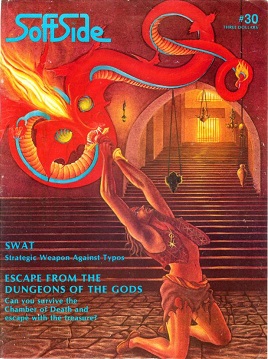
SoftSide is a defunct computer magazine, begun in October 1978 by Roger Robitaille and published by SoftSide Publications of Milford, New Hampshire.
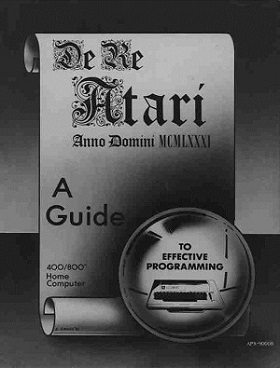
De Re Atari, subtitled A Guide to Effective Programming, is a book written by Atari, Inc. employees in 1981 and published by the Atari Program Exchange in 1982 as an unbound, shrink-wrapped set of three-holed punched pages. It was one of the few non-software products sold by APX. Targeted at developers, it documents the advanced features of the Atari 8-bit computers and includes ideas for how to use them in applications. The information in the book was not available in a single, collected source at the time of publication.















